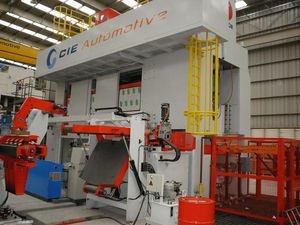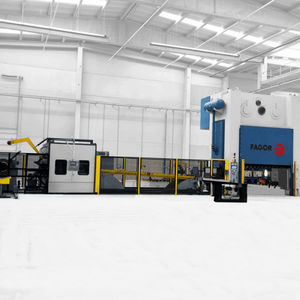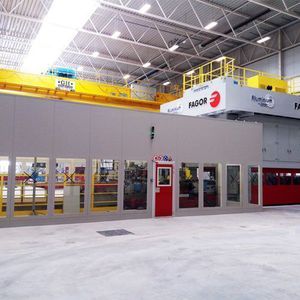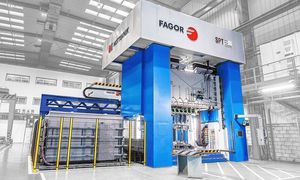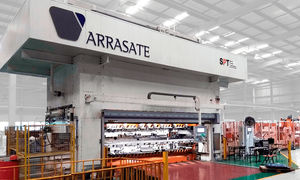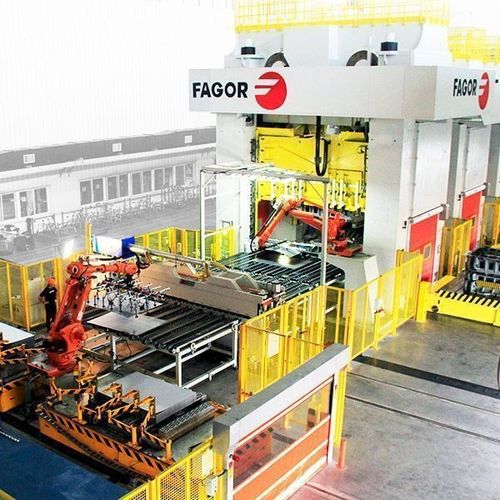
- Production Machines
- Forming Machine
- Mechanical press line
- Fagor Arrasate S.Coop.

- Products
- Catalogs
- News & Trends
- Exhibitions
Mechanical press line hydraulicdrawingstamping
Add to favorites
Compare this product
Characteristics
- Operation
- hydraulic, mechanical
- Function
- stamping, drawing
- Control
- fully-automatic
- Other characteristics
- transfer, double-action
- Applications
- for the automotive industry, for aluminum, blank
- Rate (strokes/min)
12 p/min
Description
The manufacture of large and medium-sized parts, mainly for car bodies, requires the use of several presses in which different operations are carried out for the final forming of the part.
Conventional press lines are also called start-stop press lines. These press lines have a drawing press that can either be double-acting or single-acting with a cushion at the bed. A number of presses follow depending on the number of operations required by the parts to be manufactured. The presses that make up the line can be either hydraulic or mechanical.
At present, this type of line is fully automated. Blank loading operations are carried out by means of a destacker using robots or feeders. A similar situation occurs with the loading of the drawing press and the transfer between presses, as robots or feeders can be used.
This type of line reaches a production rate of up to 12 strokes per minute and has the advantage of being easy to program and maintain. The programming of the interconnection between presses and the automatic devices is done by means of ‘traffic lights’ which allow the automatic unloader to enter while the press stops in the PMS and waits for the light to change before stamping the next part.
Other aspects that also characterise today’s conventional press lines are:
Ease of use: The HMI helps the operator during the operation.
Quick reference change: Moving bolsters, quick clamps, quick die connectors, etc.
Ease of maintenance: well-structured programmes and HMI with aids.
TECHNICAL SPECIFICATIONS
Conventional press lines can be configured according to customer’s wishes and the requirements of the parts to be produced. At FAGOR ARRASATE,
Catalogs
No catalogs are available for this product.
See all of Fagor Arrasate S.Coop.‘s catalogsRelated Searches
*Prices are pre-tax. They exclude delivery charges and customs duties and do not include additional charges for installation or activation options. Prices are indicative only and may vary by country, with changes to the cost of raw materials and exchange rates.





